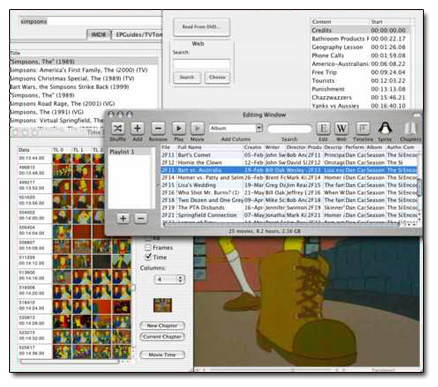NEW CLUB NIGHT on Thursday September 7th, 2006 at 6pm until 8pm in the Lecture Theatre, Ben Pimlott Building, Goldsmiths, University of London, New Corss, SE14 6NW
FREE, ALL ARE WELCOME
Dear friends
We hope you had a lovely summer and are ready for a new round of Thursday Club events…
… starting on SEPTEMBER 7, 6-8pm with a presentation by JON MCCORMACK, Co-director, Centre for Electronic Media Arts, Monash University (Australia)
::
*SIMULATION, SYSTEMS, ARTIFICE*
In this talk I will give an overview of how I have used generative processes as a creative system. My aim is to enable new modes of creative expression with computation that are unique to the medium. Most existing software tools borrow their operational metaphor from existing creative practices: for example Photoshop uses the metaphor of a photographer’s darkroom; 3D animation systems borrow from theatre, film and conventional cell animation. In a tool with an oeuvre as diverse as the modern digital computer, one would hope that computation itself as a medium might have things to offer that are not based on metaphors borrowed from other media. I will illustrate some possibilities using the software systems I have developed over the last 15 years and the creative works that I have produced with them. These works include: Turbulence: an interactive museum of unnatural history (1994); Eden an evolutionary ecosystem (2000-2005) and the Morphogenesis series of evolved forms (2002-2006). Examination of these works will be placed in a philosophical framework and historical context. I will also discuss some possibilities for future development of generative software based on these ideas.
About Jon McCormack:
John is an Australian-based electronic media artist and researcher in Artificial Life and Evolutionary Music and Art. His research interests include generative evolutionary systems, machine learning, L-systems and developmental models. He is currently Senior Lecturer in Computer Science and co-director of the Centre for Electronic Media Art (CEMA) at Monash University in Melbourne, Australia. CEMA is an interdisciplinary research centre established to explore new collaborative relationships between computing and the arts. John’s artworks have been exhibited internationally a wide variety of galleries, museums and symposia, including the Museum of Modern Art (New York, USA), Tate Gallery(Liverpool, UK), ACM SIGGRAPH (USA), Prix Ars Electronica (Austria) and the Australian Centre for the Moving Image (Australia).
—
…And this is only the beginning… Now get your diaries and make a note for the rest of the Autumn term’s Club nights, as you’ll want to be there…
::
**NEW CLUB NIGHTS** NEW CLUB NIGHTS** NEW CLUB NIGHTS**
on 5 OCTOBER with MICK GRIERSON
::
*AUDIOVISUAL COMPOSITION AND THE AVANT-GARDES*
Mick is a musician, film-maker and researcher. He recently became a Research Fellow at the Goldsmiths Electronic Music Studios.
—
on 19 OCTOBER
*UNEASY SPACES*
Opening of a photo /video show in collaboration with the New York University
on 20 OCTOBER, CONFERENCE
—
on 26 OCTOBER with ADNAN HADZI & MARIA X
::
*ON STRATEGIES OF SHARING: THE DEPTFORD.TV PROJECT*
Adnan is a PhD candidate and Visiting Lecturer at Goldsmiths (Media and Communications). Maria is a PhD candidate at Goldsmiths (Digital Studios & Drama) and Visiting Lecturer at Birkbeck.
—
on 2 NOVEMBER with BRIAN KAVANAGH
::
*SONIC SENSORIUM*
Brian is an artist and musician. He is just completing his MA in Interactive Media at Goldsmiths.
—
on 16 NOVEMBER with TIM HOPKINS
::
*ELEPHANT AND CASTLE: A PRESENTATION OF WORK-IN-PROGRESS ON A LYRIC THEATRE PIECE*
Tim is an opera and multimedia lyric theatre director, and a NESTA Fellow.
—
on 30 NOVEMBER with MARK D’INVERNO
::
*CELL: AN INTERDISCIPLINARY PROJECT LOOKING AT NEW THEORIES OF STEM CELL BEHAVIOUR*
Mark is Professor of Computing at Goldsmiths with a research interest in intelligent agents and multi-agent systems.
—
on 14 DECEMBER with SPEAKER TBC
—
For more information on the Thursday Club check here or email maria x: drp01mc@gold.ac.uk







